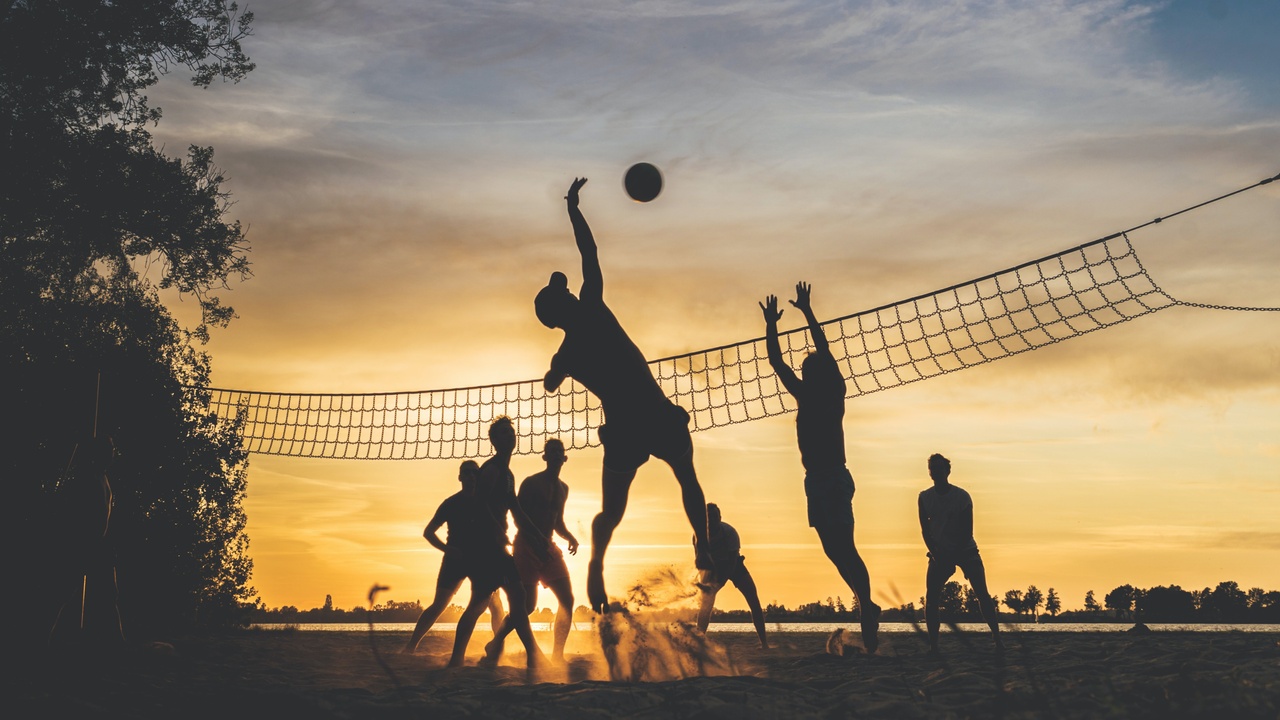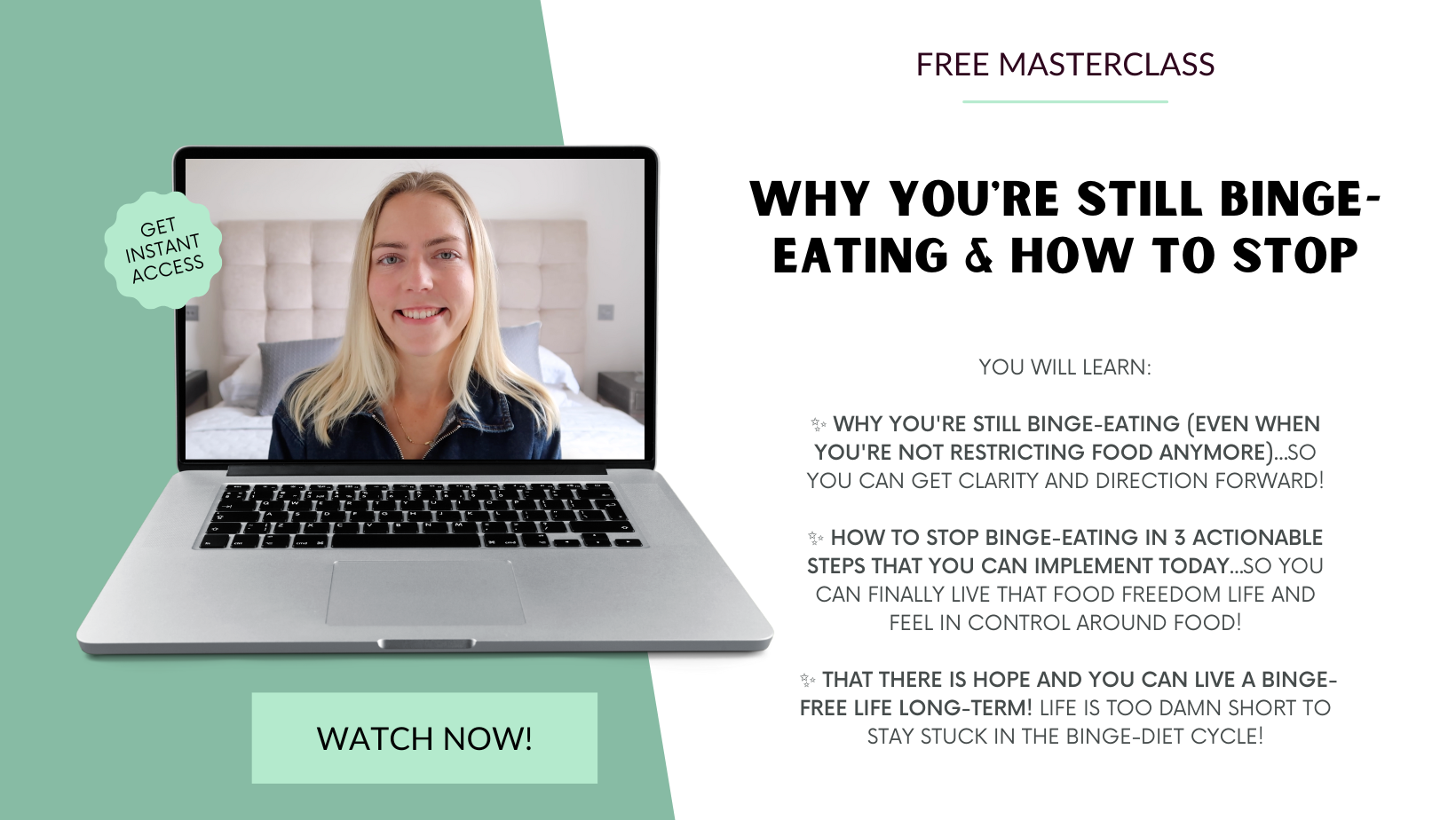Intuitive Movement: How To Heal Your Exercise Relationship
Nov 10, 2022
Tips For Intuitive Exercise
Looking to improve your relationship with exercise? If any of the questions below relate to you - keep reading!
- Is your relationship to food and exercise linked?
- Do you exercise so you can eat a bit more?
- Do you exercise because you binged the night before?
- When you do exercise, what does it look and feel like?
- Is your exercise done with dread?
- Does it last much longer than you would really want to exercise for?
What we want is to get to a place where exercise is done out of love and not punishment. It's something that you truly, genuinely enjoy and it just makes you feel good.
We don't want it to be this exchange system of ‘I can eat this because I've exercised or I have to exercise so I can burn off this food’. Our bodies deserve better than that.
8 tips to help you learn intuitive fitness
These tips will help you separate food from exercise and stop it from being this exchange system where one allows the other.
1. Take a break from exercise
If you feel like your food-exercise relationship is similar to what I've described so far, taking a break would be a great start. I did this. It doesn't have to be months on end, it could definitely be a couple of weeks even, but the idea is, we want to break the link between exercise and food being intertwined.
Taking a break means that you do have to continue eating, but without the crutch; the reliance on exercise to make you feel not guilty to eat.
This break could also lead to you having a craving for exercise in a genuine way; you'll want to move your body after a certain amount of weeks or whether a month or whatever it is for you, you might actually be itching to work up a sweat.
Which is okay, and completely normal! Just make sure to ease yourself back into it when you start up again.
Go easy. If you do notice yourself becoming more obsessive again or compulsive, pause, reevaluate, be honest with yourself, and take a break again. Let yourself do this as many times as you need to.
2. Enjoy your exercise
When you do start to ease yourself back into exercise, start with something that you truly enjoy; things like walking, hiking, yoga, dance, gardening, or whatever may be.
Often, it's something that you did when you were a kid. Children typically don't think of exercise as a means to burn fat - they usually move for fun while playing. That could possibly mean a team sport for you, (maybe a sport you played back when you were a kid) and it was just about fun and playing with people.
During the start of my recovery, I completely dropped running out of my exercise routine and I moved into weightlifting. I decided that I just want to get strong. I just want to feel badass. I started doing weightlifting three times a week, and these sessions were short, lasting about 20 minutes.
I didn't see it as exercise, I didn't even think about calories because I was thinking “I'm not even sweating. This doesn't even feel that hard. It's probably not even burning that many calories.”
The focus shifted, I just wanted to feel strong. I wanted to be able to lift as much weight as I could. I wanted to do a pull-up. (Actually, pull-ups are a big thing for me, I just thought it’d be so cool to be able to do a pull-up, still not there yet.)
Make sure you find something that you truly and genuinely do not link to calories.
I took a break from cardio, especially extended periods of cardio because I was doing that long-distance running for a long time. When I finally did ease myself back into cardio, I did it knowing it was good for my heart. I took it really easy. I was just doing like 6-10 minutes on the treadmill, just wanting to feel strong and see how powerful I can be.
3. Find exercise that has nothing to do with burning calories.
This tip is entirely subjective. Find teachers, classes, or anything else that has nothing to do with burning calories. Something just for you! I just go for teachers who are all about strength, mind-body connection, having fun, team atmosphere kind of thing
4. Change your language
Rewording certain language in your brain that you use around food, can lead to a better relationship you have with food and exercise. This could look like calling ‘exercise’ ‘training’ or you could call it ‘movement’. You could call it something that seems really pure to you instead of something that you hold negative connotations to.
This applies to other phrases as well, like instead of ‘I'm going to burn 600 calories’ you could try ‘I'm just going to work up a sweat today’ or ‘I'm just going to stretch my muscles today’ or ‘I want to feel stronger.’
5. Focus on how you feel.
Instead of thinking, calculating, and tracking, just go back to basics:
- How does it feel to exercise?
- How does it feel to do a certain type of exercise versus another?
- How does it feel for me when I don't exercise?
- Am I tired?
- Are my muscles sore?
- Do I need rest?
- Do I feel a bit groggy or low energy?
- Could I do something that could make me feel more energized?
Feeling instead of thinking as much and just knowing that you never have to exercise. It's only when you want to; when your body is craving it; when you want to feel stronger; when you want to feel more energized.
6. Get in touch with your inner child
Access that inner child version of you, that little kid who just loved playing tag, stuck in the mud, or hide and seek. All those things were really active, but also fun and just playful. As an adult, it might be hard to find people to play ‘stuck in the mud’, but it doesn’t have to look the exact same way.
Your playful activity could look like dancing, maybe going to a dance class or dancing with your boyfriend.
It could also be doing some gymnastics, trying to do a handstand or a cartwheel. When was the last time you did a cartwheel?
It could look like those teen sports you played as a kid: football, kicking the ball around, playing catch, playing netball, playing basketball, just going back to things that are fun and easy and 0% about earning food.
7. Detangle exercise and food being an exchange
Detangle this notion that exercise and food are completely linked. There is no exchange system between food and exercise. The only real connection you would ever want to have between them is:
- Have I waited enough time for this food to digest so I can go run?
- Is it going to feel good for me to have all that food in my belly?
- Have I actually eaten enough to do this strenuous exercise I'm about to do?
8. Lastly, no tracking.
When it comes to exercise, my final tip would be to move away from tracking calories at all or using any of these metrics, numbers, and any data that we use to measure how hard we've worked and how much food we can eat off the back of it.
That could look like deleting MyFitnessPal. Stop entering the exercise you've done in a day into MyFitnessPal. Just go on a run without tracking anything, and go straight back to basics.
I know if you're really into sports performance, tracking your heart rate and the distance does make sense, and yes you can definitely move towards that, if you want, remember, it’s your journey, but just to start this recovery journey, strip everything away that's linked to calorie counting and go back to basics.
For more in-depth help with transforming your food and body relationship too - take a look at my food and body freedom course, the 30 Day Reboot.
With Love,
Bríd
Start your food and body healing journey with the FREE masterclass
"Why You're Still Binge-Eating & How To Stop"


